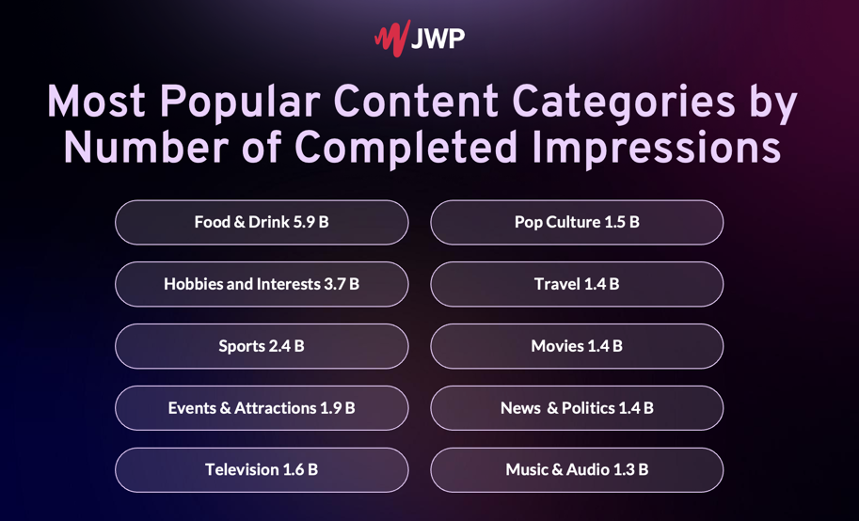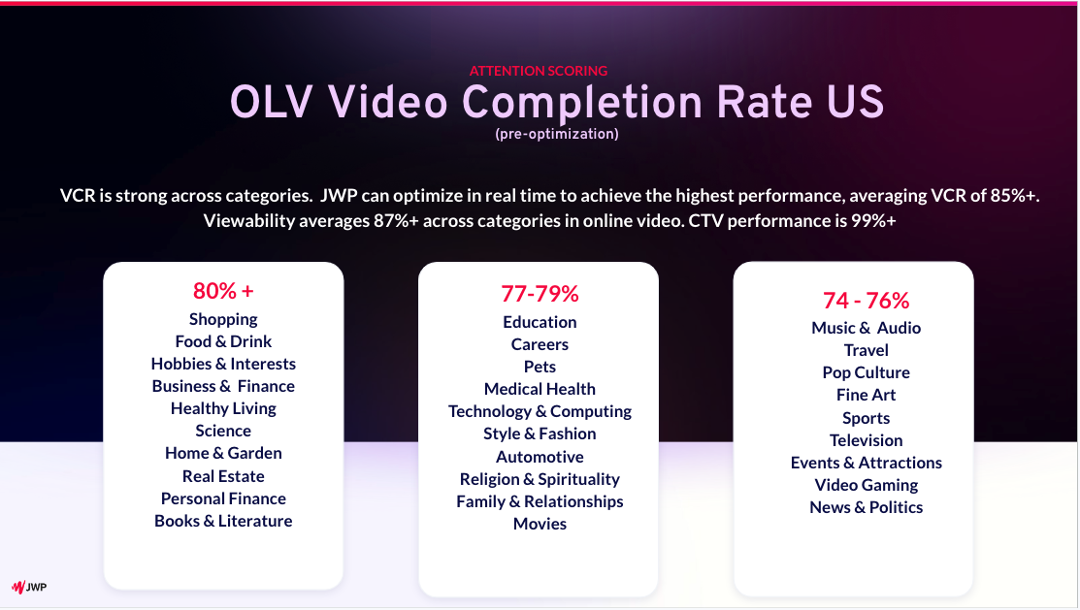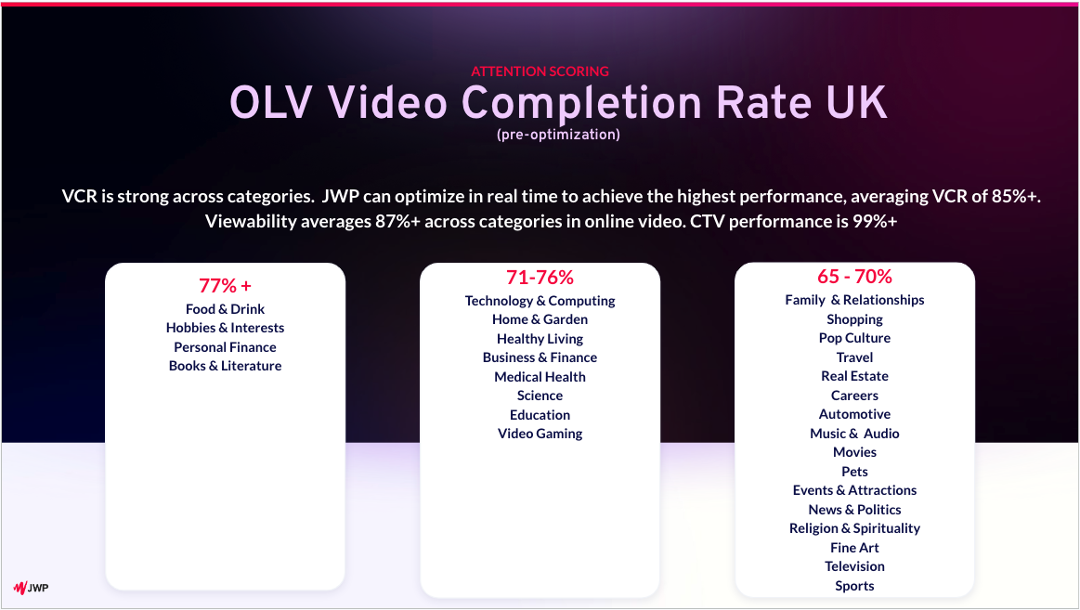Online video viewers represent a particularly captivated and attentive audience. This level of engagement creates a prime opportunity for advertisers to reach viewers.
However, once someone clicks play, an advertiser has only a matter of seconds to win or lose the attention pointed towards the accompanying video. This is where a nanosecond of invaluable opportunity lies for video advertisers.
An ad that compliments the content a viewer is seeking in that brief moment of intent can be more impactful than reaching that same viewer later on when they’re streaming their favorite shows to unwind.
JWP saw that impact when we partnered with Mars for an M&M’s contextual video campaign. Exposure to ads that were placed with JWP’s proprietary contextual targeting drove more offline purchases than any other video PMP partner, or any video on the open exchange (Nielsen Catalina data). This underscores the effectiveness of timely, relevant ad placements.
What is Contextual Video Advertising?
Contextual video advertising is the science of aligning the video ad with the content in the video, therefore tapping into the mindset of the viewer at the moment of relevance.
Intent is signaled at the video level, which improves accuracy when it comes to ad placement. In fact, by placing your video within contextually relevant content, you’re nearly doubling your chances of brand recall and purchase intent.
It’s the most ethical and noninvasive way to target the psyche of an individual. Advancements in technology and AI, like the ones made at JWP, allow for a deeper analysis of video and content consumption signals making this a powerful targeting tool in a post-cookie, pro-privacy era.
Through a contextual lens, a viewer is not being approached as a consumer, or a data driven sum of past online behavior. A contextual video ad impression is targeting a curiosity, a feeling, or an interest. This is far more privacy conscious than other forms of advertising, such as cookies.
3 Reasons Why Brands Should Prioritize Contextual Video Ad Alignment
Let’s explore reasons why contextual ad alignment far transcends its perception as a default alternative to audience data targeting.
1. Impact to Drive Results
Contextually Relevant Video Ads Receive Higher Engagement and Purchase Intent
If a video advertisement is relevant to the video the viewer is watching, they are more likely to watch the ad to completion. There is increasingly more data proving out the power and effectiveness of a contextually relevant strategy.
As the video player, JWP has measured viewership correlation between the video ad content and the video itself to find that relevant ads get higher video completion rates and viewability metrics than other ads on the same video. A leading global CPG brand at Dentsu determined that JWP’s contextual video campaigns consistently achieved the highest viewability on completion of the ad (VOC) 2x their goal. Google reports that relevant video ads get 3X times more attention than average video ads.
And, as mentioned above, M&M’s was able to drive more offline purchases (vs other PMP’s and video on the open exchange) with JWP’s contextual targeting
2. Contextual Accuracy Protects Brands
When it comes to brand safety and brand suitability, ad placement is critical. A brand’s credibility and trust with consumers can take years to build, and be compromised in an instant with poor ad alignment.
For this reason, transparency of content is essential, and the title, keywords, or classification is not enough. JWP is in a unique position because it powers more video on the open internet than any other player.
JWP specializes in editorially produced journalistic videos, as well as studio produced entertainment videos. When you take a premium environment and then have the technology to evaluate the specifics of the content itself, advertisers are given a powerful contextual tool to ensure a safe and suitable location for their brand.
Considering Reviews
Oftentimes in video, product reviews, movie reviews, gaming reviews don’t reveal if they are positive or negative in the title. The publisher wants to entice the viewer to watch the video to find out. JWP can recognize the tonality of the review as positive or negative, to help brands properly align, conquest, or avoid depending on the content.
Additionally, JWP can decipher good news on news sites while deterministically excluding bad news.
3. Contextual Video Advertising Protects Viewer Privacy
Contextual advertising stands out as both privacy-safe and ethical, particularly in its treatment of user data. Unlike methods that rely on tracking individual behavior over time, this method aligns with current data protection regulations and consumer expectations for privacy. By focusing on the context rather than the consumer, it ensures a balance between personalized marketing and privacy protection, setting a standard for ethical advertising practices.
As you can see from the data below advertisers can still achieve reach while protecting viewer privacy. Top contextual content categories like Food and Drink achieve billions of impressions. And, they can do it in an environment of high viewability with strong completion rates ensuring the highest performance possible.
To learn more about contextual video ad targeting visit our advertisers webpage. For a short time, we are offering new clients the ability to get a free brand lift study on the completion of their ad campaign with JWP.

About JWP
JWP is the leading video player on the open web. Since 2004, JWP has helped premium publishers monetize their video with first to market video technology. Today, JWP is a global leader, delivering over 100 Billion monthly video impressions in the US alone. JWP captures unique contextual and video engagement data for advertisers. Get in touch to contextually scale across this premium, previously siloed, and valuable online video ecosystem.


